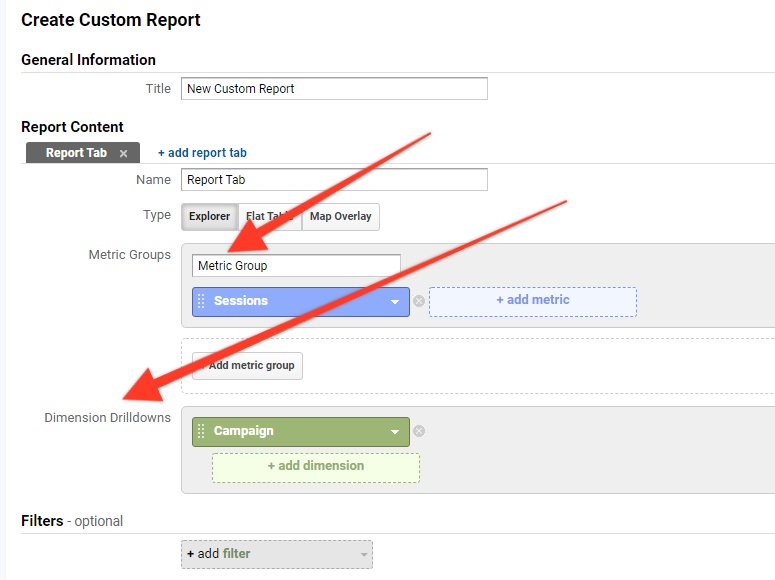If you are wondering: what is a “metric” in google analytics? Then, let me tell you that Google metrics are quantitative measurements of data and show how a website is actually performing in relation to a particular dimension. They are expressed through numerical values ($, %, time, etc).
As an example, the no. of "users" who came from mobile, tablet, and desktop devices and their duration of an average session, are the metrics for the dimension category of "Device".
Google Key Metrics
Google Analytics is very important for marketers. It helps them in analyzing how their online presence is progressing. Here are some of the key metrics that all digital marketers should pay attention to:
-
Number of Users and Sessions
This metric provides the number of distinct individuals that visited a website over a given period of time and the number of times those users got actively engaged with the said site. For example, if a site has a hundred users and over two-hundred sessions, then it is reasonable to derive that, each user visited the site twice on average during a specific time period.
Read More: How To Choose A Low Wattage Hair Dryer? Top 5 Hair Dryers [Updated 2022]
-
Average Session Duration
The average amount of time that a user spends on a website in a single session is referred to as the Average session duration. One can find this metric by clicking the Audience then Overview option. This metric is also known to be a very good and high-level proxy known for user engagement.
-
Average Pages Per Session
The average number of pages per session is the calculation of the number of pages that a user views on a single site on average. To find this option, one can find this in the dropdown "Overview" section under the "Audience" or if one is accessing through the API then one needs to go to the option - page views per session.
The no. of pages with which a distinct user interacts with is another form of a great proxy for engagement of users. It would be best to regard this metric and also the average duration of a session. However as the structure of the user hikes or the amount of content - that affects the ratio of the duration of the session versus the number of page views.
-
The Ratio Of New To Returning Visitors
If you go to the Audience and then Overview, then you will be able to compare the 2 metrics by clicking on the link that states - "Select a metric" on the right side of the primary dropdown menu.
By comparing both ratios, you will be able to determine how well a campaign is working and how much traffic new traffic it is driving. Both of them pose important metrics, the returning users will be able to indicate an increase in the LTV (Life Time Value), while an increase in the number of new users can indicate the growth of a company.
Tip: What asset is used to build a remarketing list?
The answer to this question is that the Custom Segment is used as an asset in building a remarketing list.
-
Bounce Rate
The Bounce Rate is the user's percentage that only visits a single page on a website before leaving. One will be able to find this metric in the dropdown of the "Overview Section" of the Audience. If one is accessing the said metric through the API then they need to use "bounceRate".
A higher bounce rate may be indicative of a technical problem, where the content is failing to sufficiently address a user's need properly. For example, it could be a page with no presence of internal links or even CTAs (Call to Actions).
-
Organic vs. Paid Sessions
The Organic Search Traffic comes from users who come from non-paid SERP (Search Engine Paid Results). Paid Search is the traffic that comes from advertisements on a SERP. One can get hold of this data in the "All Traffic Section" under "Channels".
This metric indicates the effectiveness of the SEO tactics that have been implemented on a site. On the other hand, Paid Search shows the effectiveness of an ad campaign as well.
-
Google Ads
One can get access to a detailed form of metrics about the Google Ads campaigns by linking their Google Ads account to their Google Analytics account. Doing so helps one analyze the customer activity on their website after an impression or an ad click.
The Search Queries are also helpful when one needs fine data, such as the conversion rates and click-through, for every “search query” that resulted in a session of a site.
-
Search Console – Queries
The Search Console section gives a very detailed metrics on the organic form of searches. Over here, one can analyze the queries that have great positions but poor CTR (Click-through-rates) or even landing pages that have high click-through rates but very poor positioning.
Visit Us: Social Media Magazine, Tech Trends Pro, Follow The Fashion, Online Health Media
To Wrap It Up!
I hope you found my guide about Google Metrics useful and got to know a bit about how these things work in favor of an online business.
Thank you for reading up till here. Let me know in the comments your thoughts on the same.


No comments yet